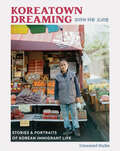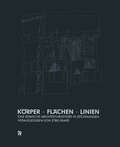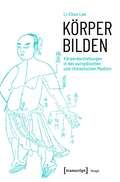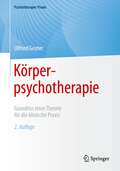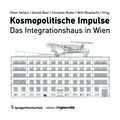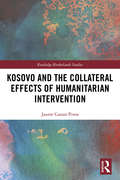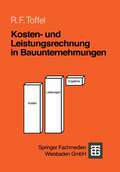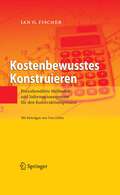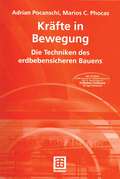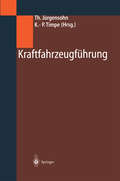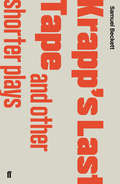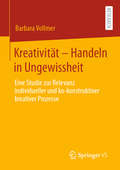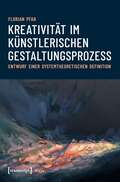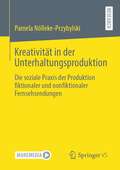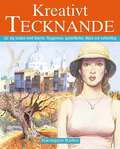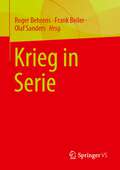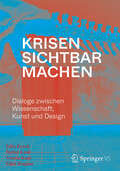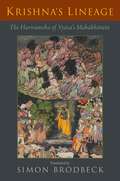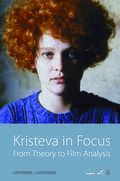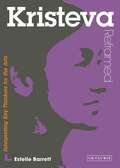- Table View
- List View
The Korean War and Postmemory Generation: Contemporary Korean Arts and Films (Routledge Advances in Korean Studies)
by Dong-Yeon KohThis pioneering volume navigates cultural memory of the Korean War through the lens of contemporary arts and film in South Korea for the last two decades. Cultural memory of the Korean War has been a subject of persistent controversy in the forging of South Korean postwar national and ideological identity. Applying the theoretical notion of “postmemory,” this book examines the increasingly diversified attitudes toward memories of the Korean War and Cold War from the late 1990s and onward, particularly in the demise of military dictatorships. Chapters consider efforts from younger generation artists and filmmakers to develop new ways of representing traumatic memories by refusing to confine themselves to the tragic experiences of survivors and victims. Extensively illustrated, this is one of the first volumes in English to provide an in-depth analysis of work oriented around such themes from 12 renowned and provocative South Korean artists and filmmakers. This includes documentary photographs, participatory public arts, independent women’s documentary films, and media installations. The Korean War and Postmemory Generation will appeal to students and scholars of film studies, contemporary art, and Korean history.
Koreatown Dreaming: Stories & Portraits of Korean Immigrant Life
by Emanuel HahnExplore and celebrate Korean culture in America through photographs and interviews by award-winning photographer Emanuel Hahn. "Photographer Hahn's animated and vivid debut . . . is exceptional." —Publisher's Weekly, Starred Review Since the first wave of Korean immigration in the early 1900s, Korean immigrants have opened and operated small businesses across the country that enrich the cultural fabric of our communities. Yet their stories are too often overlooked, as even today their existence is being pushed to the margins of American society. In Koreatown Dreaming, a project that began in Los Angeles and expanded to eight other cities, the lives of Korean immigrants are observed with care and admiration under Hahn's tender, capacious gaze. Hahn's arresting photographs and narrativized interviews portray Korean small business owners as key figures not just in their neighborhoods but in their own lives, where they experience personal struggle, sacrifice, triumph, growth, and joy.Koreatown Dreaming is at once an anecdotal history of Korean immigration and a touching homage to Korean immigrant life. These intimate stories of over 50 small businesses are a testament to the American Dream, even while complicating the illusions of that promise, and of what it means to be American. Cities featured: Los Angeles, California; Atlanta, Georgia; Annandale, Virginia; New York, New York; Flushing, New York; Pal Park, New Jersey; Fort Lee, New Jersey; Dallas, Texas; Honolulu, Hawaii.
Körper bilden: Körperdarstellungen in der europäischen und chinesischen Medizin (Image #159)
by Li-Chun LeeWir leben in einem Zeitalter, in dem medizinische Körperdarstellungen allgegenwärtig sind. Die durch verschiedene bildgebende Verfahren hergestellten Körperbilder nehmen nicht nur in der Prognose, Diagnose und Behandlung des Körpers eine unübersehbare Rolle ein, sondern bestimmen auch unsere Vorstellung vom Körper selbst. Indem er die Körperdarstellungen aus kulturvergleichender Sicht analysiert, hinterfragt Li-Chun Lee die in der Gegenwart selbstverständlich erscheinenden Körperbilder. Er zeigt, wie kulturspezifisch diese scheinbar ganz normalen Bilder konstituiert sind und wie unterschiedlich der Körper durch Bilder sicht- und lesbar gemacht werden kann.
Körperpsychotherapie: Grundriss einer Theorie für die klinische Praxis (Psychotherapie: Praxis)
by Ulfried GeuterEin einführendes Buch für die psychotherapeutische Praxis: Körperpsychotherapie als Therapie mit Hilfe des Körpers. Geschrieben für Psychologische und Ärztliche Psychotherapeuten, explizite Körpertherapeuten (Atem, Feldenkrais etc.), aber auch viele andere Berufsgruppen, die in diesem Feld tätig sind.
Kosmopolitische Impulse: Das Integrationshaus in Wien (Edition Angewandte)
Flucht und Migration bleiben bestimmende Themen der Zeit und prägen die humanitäre Situation in Aufnahmeländern. Das Integrationshaus in Wien, konzentriert auf die Aufnahme und Integration von Asylsuchenden und Flüchtlingen, arbeitet seit 15 Jahren fremdenfeindlichen Tendenzen entgegen. Zu solchem zivilgesellschaftlichen Engagement enthält dieser Band vielfältige Erfahrungsberichte und Kommentare bis hin zum Dachgartenprojekt, das 2010 in Zusammenarbeit mit der Universität für angewandte Kunst Wien realisiert wird.
Kosovo and the Collateral Effects of Humanitarian Intervention (Routledge Borderlands Studies)
by Jaume Castan PinosHumanitarian intervention is rising ever higher in international relations discourse, with many publications exploring the nature, legality and success of these interventions. However, less attention is given to what happens after an intervention. This book looks in particular at the implications for territorial and border relations, exploring the case of Kosovo, which in many ways can be seen as a turning point in post-cold war international humanitarian intervention. The 1999 intervention has had significant consequences for Kosovo in terms of political transformations, territorial alterations and enclavisation, none of which was officially intended or foreseen when NATO intervened. Two decades after NATO’s intervention and a decade after unilaterally declaring independence, Kosovo continues to be confronted with daunting existential challenges that inevitably affect the stability of the region, border relations, and the credibility of the organisations operating within Kosovo, namely the UN, the EU and NATO. The book claims that not only is the political and territorial conflict far from being settled, but that the implications have gone beyond Kosovo, creating shock waves which have galvanised conflicts elsewhere. In effect, Kosovo has been used as a pretext, as a legitimation and as an inspiration for those who aspire to challenge the border status quo. The book is primarily aimed at undergraduate and postgraduate students of International Relations and Political Science and as well as Border Studies scholars, but will also appeal to researchers focusing on state-building, peace-building, humanitarian studies, nationalism/secessionism and Balkan studies.
Kosovo and the Collateral Effects of Humanitarian Intervention (Routledge Borderlands Studies)
by Jaume Castan PinosHumanitarian intervention is rising ever higher in international relations discourse, with many publications exploring the nature, legality and success of these interventions. However, less attention is given to what happens after an intervention. This book looks in particular at the implications for territorial and border relations, exploring the case of Kosovo, which in many ways can be seen as a turning point in post-cold war international humanitarian intervention. The 1999 intervention has had significant consequences for Kosovo in terms of political transformations, territorial alterations and enclavisation, none of which was officially intended or foreseen when NATO intervened. Two decades after NATO’s intervention and a decade after unilaterally declaring independence, Kosovo continues to be confronted with daunting existential challenges that inevitably affect the stability of the region, border relations, and the credibility of the organisations operating within Kosovo, namely the UN, the EU and NATO. The book claims that not only is the political and territorial conflict far from being settled, but that the implications have gone beyond Kosovo, creating shock waves which have galvanised conflicts elsewhere. In effect, Kosovo has been used as a pretext, as a legitimation and as an inspiration for those who aspire to challenge the border status quo. The book is primarily aimed at undergraduate and postgraduate students of International Relations and Political Science and as well as Border Studies scholars, but will also appeal to researchers focusing on state-building, peace-building, humanitarian studies, nationalism/secessionism and Balkan studies.
Kosten- und Leistungsrechnung in Bauunternehmungen (Leitfaden des Baubetriebs und der Bauwirtschaft)
by Rolf F. ToffelDie Kosten- und Leistungsrechnung in Bauunternehmungen hat den Zweck, den betrieblichen Prozeß des Absatzes und der Erstellung von Bauleistungen zu planen und zu kontrollieren. Die drei typischen Merkmale der Bauunternehmung - die Einzelfertigung, die Auftragsfertigung und die Baustellenfertigung - machen eine typische Ausgestal tung der Kosten- und Leistungsrechnung in Bauunternehmungen erforderlich, in der nicht nur die Unternehmung insgesamt, sondern vor allem auch die einzelnen Bauobjekte mit Hilfe der Rechengrößen Kosten und Leistungen geplant und kontrolliert werden. Entsprechend wird hier hauptsächlich unterteilt in eine Kosten- und Leistungs rechnung für Einzelobjekte und eine solche für den Gesamtbetrieb. Diese Darstellung der Planung und Kontrolle der Kosten und Leistungen für Einzelobjekte und für den Gesamtbetrieb bedient sich der eingeführten und bewährten Begriffe des allgemeinen betriebswirtschaftlichen Rechnungswesens, soweit es möglich ist, und spezifischer baubetriebswirtschaftlicher Begriffe, wo es die Besonderheit des Baubetriebes nötig erscheinen läßt. Um dem Leser das Rechnen mit Kosten und Leistungen systematisch und auch für die praktische Anwendung gleichermaßen anschaulich nahe zu bringen, wird die Kosten- und Leistungsberechnung für Einzelobjekte und die für den Gesamt betrieb an jeweils einem Beispiel durchgängig verifiziert, und zwar ohne wie auch mit Einsatz der Elektronischen Datenverarbeitung.
Kostenbewusstes Konstruieren: Praxisbewährte Methoden und Informationssysteme für den Konstruktionsprozess
by Jan O. FischerEin funktionierendes Kostenmanagement ist für die Wettbewerbsfähigkeit eines Unternehmens unerlässlich. Kosten senkende Maßnahmen beschränken sich meist auf die Organisations- und Fertigungsprozesse. Eine Betrachtung des Produktentstehungsprozesses zeigt jedoch, dass durch die Konstruktion bereits bis zu 80% der Produktkosten festgelegt werden. In dem vorliegenden Buch werden verschiedene Methoden und Instrumente eines effizienten Kostenmanagements in der Konstruktion und deren Implementierung praxisnah beschrieben.
Kräfte in Bewegung: Die Techniken des erdbebensicheren Bauens
by Adrian Pocanschi Marios PhocasWarum ein Buch zum erdbebensicheren Bauen? In Europa und auch in Deutschland gibt es stark erdbebengefährdete Gebiete. Das Buch erklärt die Theorie zur Erdbebensicherheit von Bauwerken mit allen seismologischen und baudynamischen Grundlagen. Die Autoren erläutern Berechnungsverfahren nach EC 8, stellen erdbebengerechte Entwurfsgrundsätze als auch die Methode der Kapazitätsbemessung vor. Moderne Gebäude haben oft nur noch ein geringes Eigengewicht. Die Baustoffe mit höheren Festigkeiten lassen größere Abmessungen und Spannweiten zu. Dies konfrontiert Bauwerksplaner, Architekten und Ingenieure zunehmend mit Problemen aus der Einwirkung von zeitabhängigen Lasten auf Bauwerke. Schwerpunkte dieses Titels sind die modernen Technologien des erdbebensicheren Bauens, die passive und aktive Tragverformungskontrolle und Erdbebenisolierung.
Krapp's Last Tape and Other Shorter Plays: All That Fall, Act Without Words, Krapp's Last Tape, Cascando, Eh Joe, Footfall, Rockaby And Others (Faber Drama Ser.)
by Samuel BeckettKrapp's Last Tape was first performed by Patrick Magee at the Royal Court Theatre in October 1958, and described as 'a solo, if that is the word, for one voice and two organs: one human, one mechanical. It fills few pages. It is perhaps the most original and important play of its length ever written.' (Roy Walker)The present volume brings together Krapp's Last Tape and Beckett's other shorter works or 'dramaticules' written for the stage. It will be complemented by a forthcoming Faber edition of dramatic works written for radio and screen. Arranged in chronological order of composition, these shorter plays exhibit the laconic means and compassionate ends of Beckett's dramatic vision. KRAPP 'Here I end this reel. Box - [Pause.] - three, spool - [Pause.] - five. [Pause.] Perhaps my best years have gone. When there was a chance of happiness. But I wouldn't want them back. Not with the fire in me now. No, I wouldn't want them back. [Staring motionless before him.]
Kreativität – Handeln in Ungewissheit: Eine Studie zur Relevanz individueller und ko-konstruktiver kreativer Prozesse
by Barbara VollmerBarbara Vollmer untersucht die Themen „Ästhetik“, „Kreativität“ und „Denken“. Die im ersten Teil verfolgte Grundlagenforschung beschreibt kreative Prozesse als vielfältige Lernprozesse. Der zweite, anwendungsorientierte Teil zeigt das Anregungspotential und die Relevanz der Motivation in kreativer Teamarbeit anhand ko-konstruktiv organisierter kreativer Prozesse. Die Autorin präsentiert Ansätze für die weitere Theoriebildung, aber auch konkrete Ansätze zur Förderung von Kreativität in Teams, in Schulen und der Lehrerbildung. Die feingliedrige Analyse mit der sich anschließenden Hypothese, dass Kreativität als Kern der Intelligenz zu sehen ist, hat Relevanz für die weitere Theoriebildung. Sie stellt ein großes Potential für die bildungstheoretische Debatte um einen problemorientierten Unterricht und die Bedeutung ästhetischer Lernprozesse dar.
Kreativität im künstlerischen Gestaltungsprozess: Entwurf einer systemtheoretischen Definition (Image #144)
by Florian PfabDass der Begriff »Kreativität« mit dem künstlerischen Gestaltungsprozess verknüpft ist, scheint eine kaum hinterfragte Selbstverständlichkeit. Da durch die gestiegene Relevanz und die veränderte Funktion der Kreativität in Wissenschaft und Gesellschaft ihre Bedeutung jedoch immer wieder neu verhandelt wird, muss auch die Verbindung zwischen Kreativität und Kunst mit ihren Bedingungen und Funktionen neu gedacht werden. Florian Pfab nähert sich der »Kreativität« aus einer begriffsanalytischen Perspektive. Mit den Mitteln der Systemtheorie entwirft er eine Definition, die den Forderungen an den Begriff zwischen Schöpfermythos und evolutionärem Prinzip mit Blick auf den künstlerischen Gestaltungsprozess gerecht wird.
Kreativität in der Unterhaltungsproduktion: Die soziale Praxis der Produktion fiktionaler und nonfiktionaler Fernsehsendungen
by Pamela Nölleke-PrzybylskiKreativität charakterisiert die Fernsehunterhaltungsproduktion. Das vorliegende Buch greift diese Prämisse auf und zeichnet systematisch nach, wie und wo Kreativität im Feld der Fernsehunterhaltungsproduktion tatsächlich eine Rolle spielt – auf der Ebene der Prozesse, der Produkte und der im Feld tätigen Personen. Die Autorin bringt Praxis- und Kreativitätstheorien zusammen und entwickelt auf dieser Basis ein Modell sozialer und spezifisch auch kreativer Praxis im Feld der Unterhaltungsproduktion. Das Modell liefert konkrete Anknüpfungspunkte nicht nur für eine empirische Analyse des Feldes, sondern auch für das Management des Produktionsprozesses.
Kreativt Tecknande: Lär dig teckna med blyerts, färgpennor, pastellkritor, bläck och vattenfärg
by Barrington BarberDenna fullt illustrerade och användarvänliga vägledning av den bästsäljande konstnären Barrington Barber avslöjar allt som krävs för att lära sig teckna med en rad olika material. Den visar hur vi utvecklar vår konstnärliga förmåga och kan fånga vår omvärld på ett kreativt och fängslande sätt.• Metoder för att steg för steg lära sig teknikerna för färgpennor, pastellkritor, bläck och vattenfärg• De grundläggande färdigheter som krävs för att avbilda en mängd olika ämnen beskrivs, inklusive perspektiv och komposition• De populäraste konstgenrerna presenteras, från stilleben, landskap och djur till den mänskliga gestalten och porträttPå ett uppmuntrande och inspirerande sätt tar Barrington Barber bort allt det avskräckande från inlärningsprocessen och ser till att eleverna blir fullt utrustade för att hitta sin egen stil genom glädje och experimentering.
Krieg geht viral: Visuelle Kultur und Kunst im Ukraine-Krieg (Image #227)
by Elena KorowinSchon seit Beginn des Ukraine-Krieges ging dieser als mediales und künstlerisches Ereignis viral. Zeitgleich setzte damit ein Nachdenken über das Verhältnis der Katastrophe und ihrer medialen Vermittlung ein. Elena Korowin betrachtet die unterschiedlichen künstlerischen Reaktionen und liefert profunde Einsichten zum Wesen des Krieges in der digitalen und urbanen Kultur. Sie verortet die visuelle Kommunikation und die Bildregime des Krieges im Spannungsfeld ihrer technischen, medialen und künstlerischen Voraussetzungen - und liefert durch den Bezug auf das Verhältnis zwischen der Darstellung der Kriegsrealität und ihrer Produktion wertvolle zeitdiagnostische Erkenntnisse.
Krieg in Serie
by Roger Behrens Frank Beiler Olaf SandersDieses Buch thematisiert im Rahmen einer interdisziplinär ausgerichteten TV-Serienforschung Beiträge zum besonderen Format der Kriegsserie. Der Bogen der diskutierten Serien reicht von M*A*S*H aus der Zeit des „klassischen“ Fernsehens bis zu neueren und neusten Produktionen, die über Streaming-Dienste angeboten werden wie zum Beispiel Das Boot oder die Bundeswehr-YouTube-Serien Die Rekruten und Mali. Diskutiert werden Kriegsserien in ihren Überschneidungen mit anderen Film- und TV-Genres (Krimiserie: Magnum, p.i., History-Serie: Vikings, Sciencefiction: Battlestar Galactica, Star Trek, auch Philip K. Dick’s Electric Dreams). Im Focus steht überdies die steigende Bedeutung der Kriegsthematik in Serienproduktionen seit der Jahrtausendwende (im Zusammenhang mit den „neuen Kriegen“) wie Band of Brothers, The Pacific oder Generation Kill. Neben den aktualisierenden Untersuchungen geht es schließlich auch um historische Rekonstruktion, wenn Serien wie Combat! bis Over There untersucht werden.
Krisen sichtbar machen: Dialoge zwischen Wissenschaft, Kunst und Design
Krisen sichtbar machen führt unterschiedliche Dialoge zwischen Wissenschaft, Kunst und Design fort, welche die Grundlage des interdisziplinären Ausstellungsprojektes Making Crises Visible im Senckenberg Naturmuseum waren. Den Reflexionen dieser Ausstellung wird nun ein zusätzlicher, das Spektrum in Theorie und Praxis weiter aufspannender Rahmen gegeben. Der Band nimmt damit die in allen Disziplinen wichtiger werdende Debatte über neue Formen der Wissensgenerierung, der Wissens- sowie Wissenschaftskommunikation auf - und fragt nach dem Beitrag, den diese zur Bewältigung politischer, ökonomischer und ökologischer Krisen leisten können. Die produktive Vielfalt der Ansätze und Erkenntnisformen spiegelt sich in den unterschiedlichen Formaten und Perspektiven, die er vereint.
Krishna's Lineage: The Harivamsha of Vyasa's Mahabharata
by Simon BrodbeckForming the final part of the Sanskrit Mahabharata, the Harivamsha's main business is to supply narrative details about the great god Vishnu's avatar Krishna Vasudeva, who has been a comparatively minor character in the previous parts of the Mahabharata, despite having taken centre stage in the Bhagavad Gita. Krishna is born in Mathura (some 85 miles south of present-day Delhi). As an infant he is smuggled out of Mathura for his own safety. He and his brother Baladeva grow up among cowherds in the forest, where between them they perform many miraculous deeds and kill many dangerous demons, before returning to Mathura where they kill the evil King Kamsa and his cronies. Thereafter, Krishna is the hero and unofficial leader of his people the Yadava-Vrishnis. When Mathura is besieged by enemies, Krishna leads his people to abandon the town and migrate west, founding the dazzling new city of Dvaraka by the sea. Krishna then repeatedly travels away from that base repeatedly to perform heroic deeds benefitting those in need - including his own people, his more immediate family, and the gods. After narrating the stories of Krishna, the Harivamsha ends by finishing the story of Janamejaya with which the Mahabharata began. The Harivamsha is a powerhouse of Hindu mythology and a classic of world literature. It begins by contextualising Vishnu's appearance as Krishna in several ways, in the process presenting a variety of cosmogonical, cosmological, genealogical, mythological, theological, and karmalogical materials. It then narrates Krishna's birth and adventures in detail. Presenting a wide variety of exciting stories in a poetic register that makes extensive use of natural imagery, the Harivamsha is a neglected literary gem and an ideal starting-point for readers new to Indian literature.
KRISHNA'S LINEAGE C: The Harivamsha of Vyasa's Mahabharata
by Simon BrodbeckForming the final part of the Sanskrit Mahabharata, the Harivamsha's main business is to supply narrative details about the great god Vishnu's avatar Krishna Vasudeva, who has been a comparatively minor character in the previous parts of the Mahabharata, despite having taken centre stage in the Bhagavad Gita. Krishna is born in Mathura (some 85 miles south of present-day Delhi). As an infant he is smuggled out of Mathura for his own safety. He and his brother Baladeva grow up among cowherds in the forest, where between them they perform many miraculous deeds and kill many dangerous demons, before returning to Mathura where they kill the evil King Kamsa and his cronies. Thereafter, Krishna is the hero and unofficial leader of his people the Yadava-Vrishnis. When Mathura is besieged by enemies, Krishna leads his people to abandon the town and migrate west, founding the dazzling new city of Dvaraka by the sea. Krishna then repeatedly travels away from that base repeatedly to perform heroic deeds benefitting those in need - including his own people, his more immediate family, and the gods. After narrating the stories of Krishna, the Harivamsha ends by finishing the story of Janamejaya with which the Mahabharata began. The Harivamsha is a powerhouse of Hindu mythology and a classic of world literature. It begins by contextualising Vishnu's appearance as Krishna in several ways, in the process presenting a variety of cosmogonical, cosmological, genealogical, mythological, theological, and karmalogical materials. It then narrates Krishna's birth and adventures in detail. Presenting a wide variety of exciting stories in a poetic register that makes extensive use of natural imagery, the Harivamsha is a neglected literary gem and an ideal starting-point for readers new to Indian literature.
Kristeva in Focus: From Theory to Film Analysis (Berghahn Ser.)
by Katherine J. GoodnowDealing with some of the major themes in film narratives, this book draws on the theories of French psychoanalyst Julia Kristeva. It looks at how narratives have changed over time, and considers the sources of our variable reactions to themes and representations of horror, strangers, and love. In addition to a selection of contemporary mainstream films, the major films for analysis are New Zealand “New Wave” films such as Alison Maclean’s Kitchen Sink and Crush; Vincent Ward’s Vigil; and Jane Campion’s Sweety, An Angel at My Table, and The Piano.
Kristeva in Focus: From Theory to Film Analysis
by Katherine J. GoodnowDealing with some of the major themes in film narratives, this book draws on the theories of French psychoanalyst Julia Kristeva. It looks at how narratives have changed over time, and considers the sources of our variable reactions to themes and representations of horror, strangers, and love. In addition to a selection of contemporary mainstream films, the major films for analysis are New Zealand “New Wave” films such as Alison Maclean’s Kitchen Sink and Crush; Vincent Ward’s Vigil; and Jane Campion’s Sweety, An Angel at My Table, and The Piano.
Kristeva Reframed: Interpreting Key Thinkers for the Arts (Contemporary Thinkers Reframed)
by Estelle BarrettFor Kristeva, in a world immersed in readymade images, art or aesthetic experience is a practice that constitutes both a subject (a sense of self) and an object that is able to transform meaning and consciousness. Kristeva Reframed examines key ideas in Kristeva's work to show how they are most relevant to artists, and how they can be applied in interpreting artworks. With examples from the paintings of van Gogh and Picasso, the work of contemporary eminist painters, the photography of Bill Henson and the film and animation work of Van Sowerine, Estelle Barrett demonstrates how Kristeva can lluminate the relationships between artist and art object, between artists, artworks and audiences, and between art and knowledge. Through these relationships she explores what Kristeva's work reveals about the role and function of art in society and offers a smooth passage through Kristeva's ideas and her relevance to visual culture.

